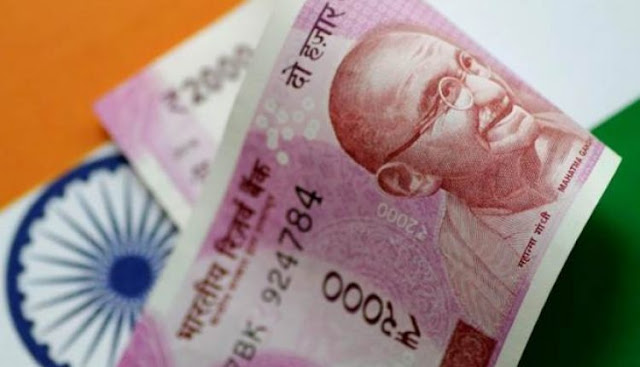Rupee hits historic high of 71/USD; Top 5 factors which are weighing down currency
Consistent demand for the US currency from oil importers and rising crude oil prices which raising inflationary pressures are major reasons for rupee depreciation.
The Indian rupee touched a historic high of 71 against the US dollar on Friday, falling 26 paise today, 1.55 percent during the week and more than 11 percent year-to-date. It was trading at around 64 to the dollar on the same day last year.
Consistent demand for the US currency from oil importers and rising crude oil prices which raising inflationary pressures are major reasons for rupee depreciation.
Besides the robust month-end demand for the American currency from oil importers, dollar's strength against its rival currencies on expectations of rising interest rates amid lingering Sino-US trade tensions weighed on the domestic currency, forex dealers told PTI.
VK Sharma, Head Private Client Group & Capital Market Strategy at HDFC Securities said rupee was overvalued on trade-weighted real effective exchange rate. “We are not overly concerned about the rupee beyond 72 level. Robust FDI flows in e-commerce companies, healthy forex reserves may limit the downside of the rupee.”
In fact, it has been underperforming its emerging market counterparts due to likely increase in current account deficit. It is expected to increase further, experts said.
“The rupee is likely to underperform its emerging market (EM) counterparts due to higher crude prices which weighed adversely on the trade deficit, unlike current account surplus in EM countries,” said Abhishek Goenka, CEO, IFA Global who expects it to be in the range of 70.85-71.30 with the upside bias.
He further said the RBI may hammer USDINR down 15-20p to crush speculative longs but it can do little to prevent Rupee opening weaker on gaps.
He advised importers should cover through call options even though the cost of the premium is high. "Any interventions through RBI can reverse the Rupee between 71 to 73, so booking forwards could be tricky. Exporters can book through range forwards structure protecting the range of 74 to 77 or should go slow on booking forwards keeping a stop loss of 70.40."
The Yuan, Lira, crude and US yields are the most important factors to watch out for, he feels.
Here are top five factors that are driving down the rupee to record low:
Trade War and Currencies War
Temporary cooled off trade war tensions again popped up as report indicated that US President Donald Trump would move ahead with additional tariffs on $200 billion worth of Chinese imports by next week.
Globally experts feel the trade war seems to be the biggest risk in September. Another thing to watch out for would the trade deal between US and Canada.
This renewed risk pulled emerging markets down on Thursday, including currencies like Argentine peso that crashed to record lows and Turkish lira sunk after reports that a key central bank member could resign.
"Emerging market currencies are under pressure as the Argentine Peso (ARS) and Turkish Lira (TRY) have weakened significantly. The request by the Argentine government to the IMF for early release of USD 50bn loan started the downslide in the Argentine Peso. The Argentine central bank hiked rates by 15 percent to 60 percent to combat the currency crisis. The Turkish Lira too crashed 5 percent on chatter that the deputy governor of Turkish Central Bank could resign," Goenka said.
The fall in emerging markets currencies also weighed on Indian rupee.
Crude Oil Prices
Crude is the major part of India’s import bill, so any rise in crude oil prices has direct impact on import bill which resulted in rising in current account deficit and also increase inflationary pressures.
India imports more than 80 percent of its oil requirement.
Recently Brent crude futures, the international benchmark for oil prices, rallied from around $71 a barrel levels to around $78 a barrel. In fact, in the current week, it has risen around 2.5 percent. Last week, it was up 5 percent.
Experts feel crude is expected to increase further amid looming US sanctions against Iran's oil exports.
“Crude oil supplies from the OPEC have declined due to rising geopolitical tensions. Sanctions on Iran, unplanned shutdowns in Libya, along with debt crisis in Venezuela have led to supply constraints. Also, US crude oil production growth has stabilised, there have been draw downs in crude oil inventory stocks and the total exploration capex in the US has slowed down, supporting the upward trend in crude price,” India Ratings and Research said.
Goenka said elevated crude prices could cause the Rupee to underperform its stable EM counterparts and would be negative for domestic bonds as well.
Dollar Demand
The demand for US currency has been unabated especially after the growth seen in the American economy.
Majority of global transactions happen in the US currency, so as the US economy has been growing rapidly, the demand for dollar has also been increasing.
Trade war tensions between the US and China also supported the dollar.
On top of that, month-end demand from oil importers also added pressure on the rupee. Even the companies which use it as the raw material like petroleum, agri products, tyre, paint, shipping, coal etc, are buying longer-maturity contracts instead of fortnight contracts.
So in short, the demand for dollar has been increasing, which will result in the increase of futures premiums.
The dollar index on Thursday recovered against major currencies amid profit booking as well as news the US President wants to move ahead with his plans to impose import tariffs on $200 billion worth of Chinese imports.
US Economy
World’s largest economy the United States has been growing rapidly especially after President Donald Trump took various measures to revive the economy, which already reflected in the data points.
US economy reported the best performance in last nearly 4 years, showing 4.2 percent growth.
Jobless claims rose slightly to 213,000 last week but remained near multi-decade lows as the underlying trend still points to a tightening labor market. Personal income rose 0.3 percent in July.
US Federal Reserve remains Bullish
The Federal Reserve has been bullish about US economic growth and recently the chairman indicated the gradual increase in interest rates.
Federal Reserve Chairman Jerome Powell last week said the US economy is strong and gradual rate hike is likely going forward as the economy can handle tighter monetary policy.
So investors globally have been increasing their exposure to the US dollar.
Disclaimer:-The views and investment tips expressed by investment experts are their own. Ripples Advisory advises users to check with certified experts before taking any investment decisions.
Two days Free Trial and best services packages for dealing in Stock market click here to get >> Stock Market Tips By Ripples Advisory Give a Missed call @9644405056



Comments
Post a Comment